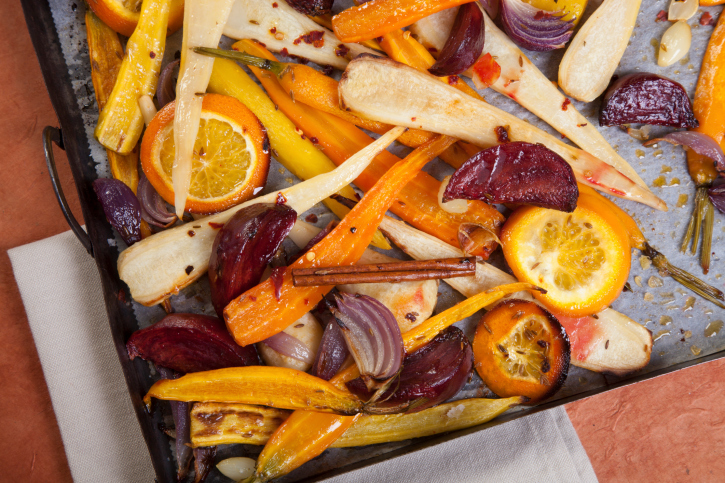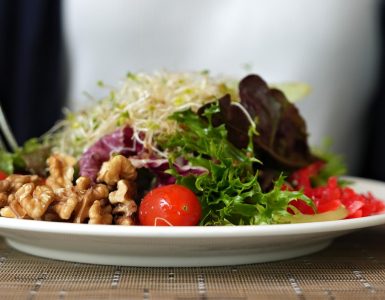Sometimes it seems like winter will never end. But even on the coldest of days, one thing is for certain: spring will come again, and it’ll happen sooner than you think. In the meantime, don’t miss out on all the delicious, nutritious fruits and vegetables available during winter!
By choosing in-season produce, you’re often getting food that is very fresh and is sold for a better price than out-of-season produce. This list from Fruits & Veggies: More Matters tells you all the fruits and vegetables that are in season right now—plus, read on for fun ways to incorporate these foods into your meals and snacks!
Clementines: These small citrus fruits make a great portable snack. Keep a bowl of them on the kitchen counter, and pack them in your kids’ lunchboxes (and your own lunch bag, too!) Want to incorporate clementines into a meal? Try Clementine & Five-Spice Chicken or Spicy Clementine Beef Stir-Fry.
Collard greens: This veggie is a member of the cabbage family and packed with nutrients like Vitamin A and calcium. Use them in place of regular salad greens, or try them in Shrimp & Bok Choy Stir-Fry.
Delicata squash: This winter squash—a great source of Vitamins A and C—can be stuffed with whole grains or other veggies, or baked with your favorite spices. Make Squash Au Gratin as a delicious side dish, or keep your tummy warm on a cold winter’s night with Creamy Squash Soup with Shredded Apples.
Grapefruit: This juicy fruit is full of Vitamins A and C. Try eating half a grapefruit alongside whole-wheat toast with almond butter for a well-balanced breakfast.
Kale: A good source of potassium and calcium, this member of the cabbage family has been gaining popularity lately! Toss it with your favorite noodles, include it in a mix of salad greens, add it to soups, or toss it with olive oil and bake it to make kale chips!
Kiwifruit: This tart, tangy fruit is high in fiber and Vitamins C and E. Add it to your smoothies, include it in a tropical fruit salad, use it to make Kiwi Mango Salsa, or make this delicious Kiwifruit Cobbler for dessert.
Leeks: Although leeks are part of the onion family, they’re actually sweeter than onions. They’re a good source of folate, plus Vitamins A and C. Include them in soups, salads, or even as a yummy side dish, like Roasted Artichokes with Leeks.
Pears: This sweet, fiber-rich winter fruit makes a great snack all on its own, or you could include it in a variety of dishes. Slice it thinly and add it to sandwiches, use it in salads (like the Pear Bistro Salad), or try this delicious Sweet Potato-Pear Soup.
Sweet potatoes: These vegetables are nutritional powerhouses, packed with fiber, potassium, and vitamins. Try one as a side dish, baked and topped with cinnamon. You can also grill them, make sweet potato fries, or eat them for breakfast—try this Sweet Potato Pancakes with Apple-Walnut Topping recipe.
Turnips: These root vegetables are good sources of Vitamin C. Try them mashed, roast them with other root vegetables, or satisfy your sweet tooth with Maple-Glazed Turnips.
For Health Advocate Members
Need more help eating healthy and seasonally? Just contact your Wellness Coach, who can help you find healthy recipes and improve your nutrition!




[…] are lots of delicious fruits and vegetables you can use; check out these seasonal favorites. Plus, check out some of our members’ favorite ways to incorporate them into their […]